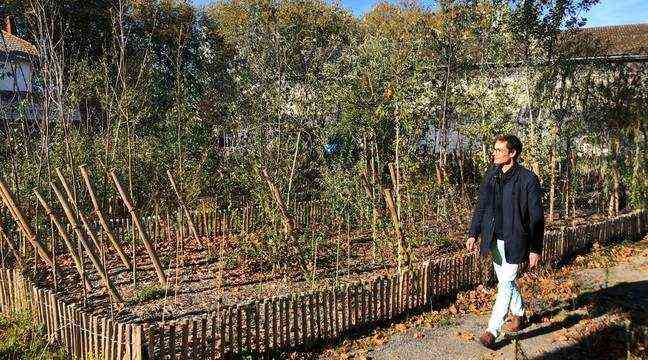Debiting plots to plant trees or plants: the idea is now in vogue in large French cities. But it is still necessary not to enrich the impoverished soil by systematically going to look for topsoil in whole trucks several tens (or even hundreds) of kilometers around. This is precisely the mistake that Nantes Métropole does not want to repeat for the creation of future parks that will green the western tip of the island of Nantes undergoing change. Considering that the many earthworks on the island constituted a “potential” for supply, the community has been experimenting since the spring with plantings made from excavated soil.
On the site of a former parking lot, near of Solilab, poplars, willows, alders, maples or hazelnuts from the nursery grow on a mixture of sand and clayey silt extracted from a neighboring site. “We added compost, nothing else,” explains Gabriel Mauchamp, landscaper at
the agency Osty et associés. We test different mixtures and see what happens. We look at which species are best suited, we measure the quality of the soil, its humidity, the biological activity that develops there … “
“Reproduce on a larger scale”
Also implemented in Lyon, Strasbourg or Rennes, the process, which is technically in no way revolutionary, is called “renaturation”. “The idea is to make the best use of this local soil which has been extracted and which one might think is inert,” says Olivier Hugues, project manager at the Samoa, the public company for the development of the Île de Nantes. We will learn from them, month after month, in order to make the right choices and be able to reproduce them on a larger scale. »Well adapted to the environment, the selected plants will ultimately require« little maintenance ».
The experiment, which is to last until 2023, will use up to 10,000 m3 of land. But the final objective is much more ambitious since it is a question of locally recovering at least 100,000 m3 of the 130,000 m3 of land that the new parks on the Ile de Nantes will need to see the light of day instead of surfaces. paved for nearly a century.
“Topsoil will become scarce”
“Until now, we didn’t care much about the ground. We moved the excavated earth on construction sites so that it could be treated outside the cities and we brought in punctured topsoil, sometimes very far away. Now, we want a real circular device. Make sure that the urban project is up to the ecological challenges ”, defends Mahel Coppey (EELV), vice-president of Nantes Métropole in charge of waste. If the experimental approach does not yet lead to financial savings, things could change quickly. “The available topsoil will become scarce, its price will probably increase”, forecasts Olivier Hugues, from Samoa.
The same “renaturation” is envisaged in other Nantes districts undergoing urban renewal, such as Bas Chantenay or Pirmil-les Isles. “But the model cannot be exactly the same everywhere. The nature of the soil is different from one district to another ”, specifies Thomas Quéro (PS), deputy mayor of Nantes in charge of town planning. Pollution can also sometimes prevent any reuse of cleared land.

